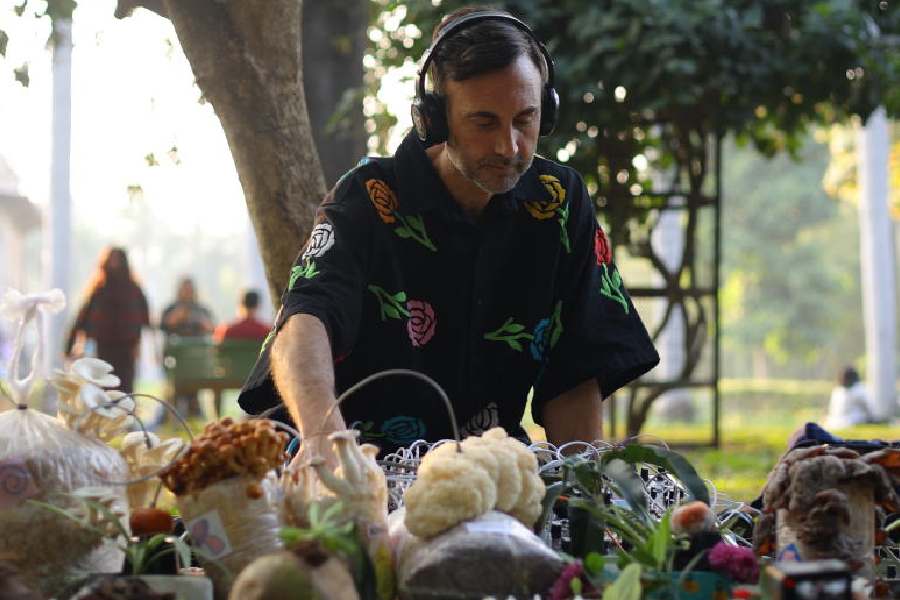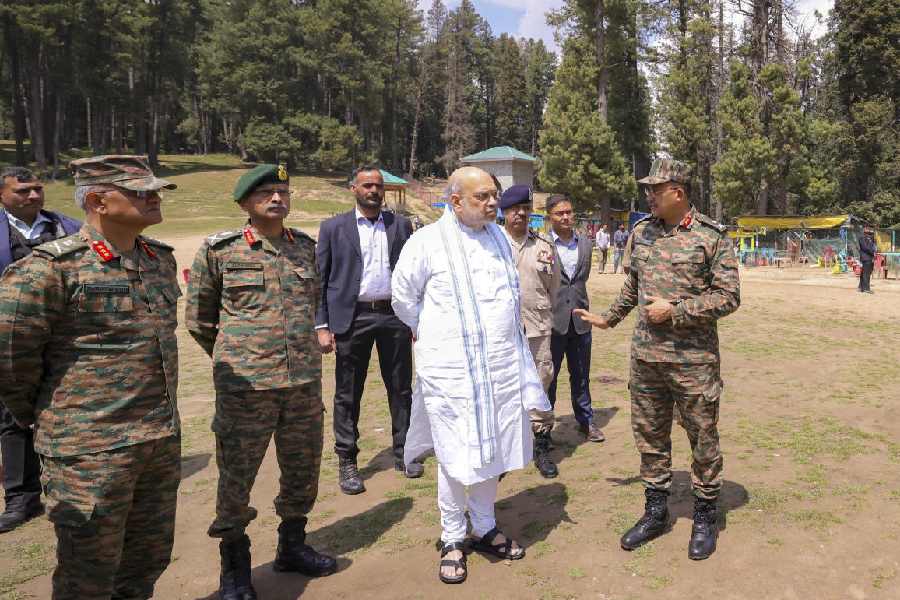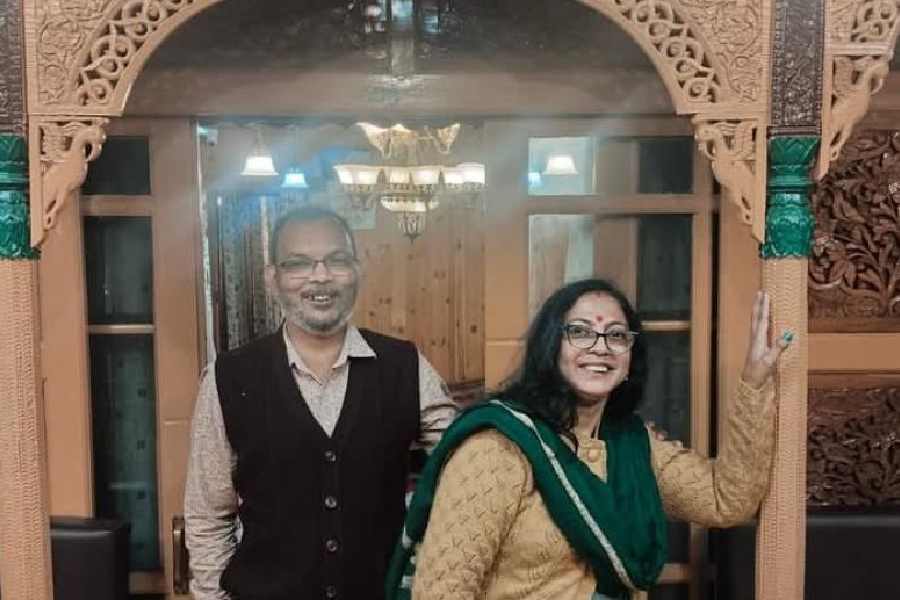Tarun Nayar makes music with mushrooms. His musical alias is Modern Biology, and he tours worldwide and hosts concerts on plants and mushroom music. Born to an Indian father and a Canadian mother, Nayar grew up in Vancouver. And the last two years hehas been visiting India for music tours.
Some months ago, he made stops at Ernakulam in Kerala, Karjat in Maharashtra, Bangalore and Delhi.
Speaking to The Telegraph over a video call, Nayar says, “I understand that there is a virality to the concept; mushrooms making music, plants making tunes — it does surprise people.”
But Nayar does not actually make mushrooms or plants sing. They already have a way of communicating with each other, just not at a frequency that human ears can pick up on. “So we use data sonification,” says Nayar. That is techie talk for the process of translating plant sounds into music using the keyboard or the synthesiser.
Last year, during his visit to India, Nayar stopped at Calcutta and visited Jagadish Chandra Bose’s home-turned-research-institute Basu Bigyan Mandir. He says, “I spent two days going through Bose’s inventions.” Bose’s invention, the crescograph that detects life in plants, according to Nayar, paved the way for plant music. “Bose was so ahead of his time,” he adds.
Nayar does not claim to have invented plant music. “People were experimenting with this genre way back in the 1970s,” he says. “During the pandemic, I spent a lot of time amidst nature,” says the man who has a master’s degree in oceanography. He continues, “I built synthesi-sers, experimented with their circuits and hooked them onto plants around me. When I shared them online, people responded with enthusiasm.”
Not just fungi and plants, in one of his videos Nayar can be seen teasing music out of a slice of watermelon as part of his series Taste Sound.
One of his other tracks Amanita Mushroom sounds like this: robotic whammm, whamm, wham... Then shorter bursts of the same sound, like bubbles popping. It is whimsical, moody and eccentric, possibly what a mushroom would sound like if it could pick and play a guitar in a cartoon show. The sound from a banyan feels ancient to the ear and soothing too, as if loaded with age-old wisdom.
Nayar says, “I am working on a machine right now that should help people create this music at home.”
The plant music concerts go on for two hours. Listeners sit under the open sky or under trees, and soak in the music. Nayar sits among them, surrounded by his machines, synthesisers and keyboards, sometimes even a tabla, and just like that he starts to play and channel the rhythm of nature’s music.
In Ernakulam, he collaborated with an eight-year-old Carnatic singer Karthik. At Karjat, the crowd wasbigger. It was a full-day mushroom music festival.
A community artiste Kunal Naik, 46, joined Nayar on stage. He played a mouth harp-like instrument called morchang, which is typical to Rajasthan. Says Naik, “I played with Nayar for merely five minutes or so but play-ing with plants and having them play back to me was celestial, surreal.”
Malavika Bhatia of the Fungi Foundation of India attended the festival at Karjat. Primarily based in Santiago, Chile, Fungi Foundation works in many countries. In India, they are working in Meghalaya to conserve local species of fungi. She tells The Telegraph, “Modern Biology’s music opens new pathways for people to understand and engage with fungi. When people hear the music, they feel moved to protect and conserve the flora, the fauna and the fungi around them.”
“I am sure every listener finds new meaning in our music,” adds Nayar. Modern Biology is young. Nayar is still exploring what it wants to be. “But I think it is a powerful way of reminding us that we belong to the same fabric as plant life, everything around us is alive and it is up to us to take care of it.”
Nishant Venkatesh, a Hindustani classical music teacher, who attended one of Nayar’s concerts, says, “If you want to sing withthe plants, you have to be patient and receptive. You don’t know when the sound will come from the plants but when it finally does, you have to react to it with your sound, your music.”










